As systems and components become smaller and smaller while at the same time requiring greater efficiency and higher speeds, connector miniaturization has become the norm. And with industrial-grade connectors, maintaining reliability and power with compact designs is critical to safe, secure and long-lasting equipment.
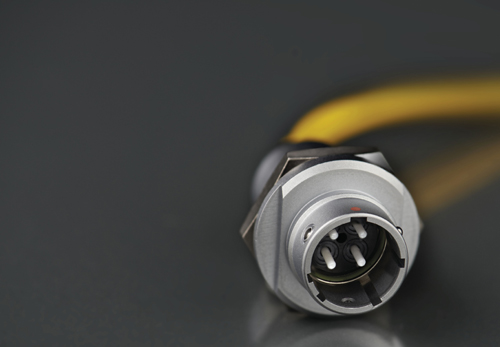
Meeting the needs of military and medical markets
Industries driving this miniaturization include military, medical and mobile, handheld devices. The move is to create smaller products with lower profiles, while keeping the power as high as possible and minimizing the connector package.
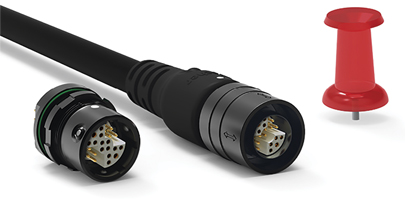
“If you think about it, each of us carries around probably a dozen connectors in our pockets everyday, but when you look at our medical and military customers, we’re seeing that need for small being balanced with a need for robust, reliable solutions,” said Brendan Dempsey, business develop manager, ODU-USA. “Where there’s an environment, let’s say in an operating room or a combat environment, a failure could mean injury or loss of life.”
Steven Lassen, products and applications manager for LEMO USA, added that this move to miniaturization began back in 1984, as the medical industry began to demand 14-contact designs.
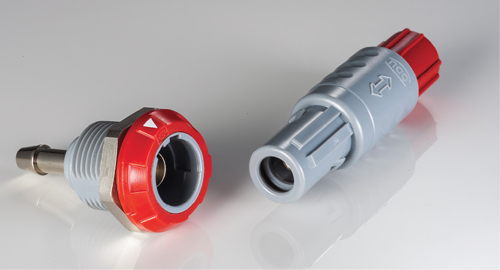
applications, where equipment must be kept sanitary at all times.
“The demand for more contacts is steadily increasing over the years. Now we have up to 34 contacts in some of the larger sizes,” Lassen said. “We definitely see requirements for lower weight, higher contact density and to maintain the highest degree of reliability. That’s the ultimate requirement.”
Lassen added that in addition to making them smaller, many applications require a combination of multiple signals and high currents simultaneously. “You could maybe think of it as having a connector within a connector,” he said.
The evolution of size reductions
Dempsey said that the origin of micro-miniature connectors can be traced back to the 1960s, with nano-sized connectors that go back almost as far. “Those older generations of products carry with them the baggage of being not very user friendly. Again, with this explosion of handheld electronics, it really created this demand for small, lightweight, board-level I/O connectors that are easy to use. With each application there’s a unique balance of size, reliability, price and usability.”
Pitch sizes have had to shrink, too, said Mike Higashikawa, regional project manager for Micro Products Div. of Molex. When it comes to those board-to-board connectors, Molex offers designs with pitch size from a 0.4 down to 0.35 mm pitch, in EFDC connectors in a pitch size from a 0.3 down to 0.2 mm.
Standing up to harsh environments
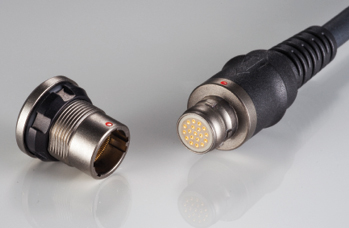
As these connectors are used in hostile environments such as those encountered by military personnel, rugged designs that combine power and signal in one product are growing, said David Ptacek, national sales manager and U.S. product manager for Fischer Connectors’ MiniMax Series.
For example, there is a trend toward IP68 and IP69K, which is the ability for the connector to withstand high
pressure, high temperature, water and steam. To this end, Fischer’s connectors are submersible to 2 m for 24 hours, and Dempsey said ODU has recently incorporated these ratings into its AMC line.
Is there such a thing as too small?
Ptacek added that whole solutions must be considered when designing with miniature industrial connectors. “What we see is it really comes down to a solution. Not only do you have to worry about the connector, but you also would have to worry about the cable and the data rates that you’re going to be passing through it,” Ptacek said. “In today’s environment, with USB 3.0 and some of the other data signals that are required, you really have to have the expertise in not only your connector but also your cable assembly.”
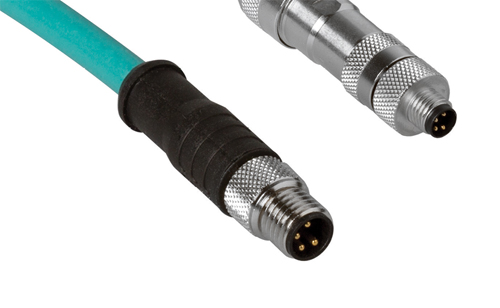
This is true of M8 and M12 designs, which have grown in popularity as manufacturers need more compact, safer ways to connect machinery and communication devices to a more secure form of distributed control. For example, Turck recently launched its first-ever M8 Ethernet connector for bus connection. “We wanted to offer our customers an Industrial Ethernet connectivity solution for applications with limited space,” said Laura Schweitz, product manager for Turck. “Not only are we able to offer our customers an M8-sized Ethernet solution, but we are able to do so without compromising the functionality they enjoy from the rest of our industrial Ethernet line.”
Lassen cautioned, however, that it’s easy to out-design ourselves. “It’s kind of up to user dexterity,” he said. “You can only go as small as the user can easily manipulate the connector. There are some limitations physically with the grip ability there.”
Dempsey agreed, adding, “I’ve seen people struggle to pick up a pencil with a glove,” Dempsey said. “If you make the connector on that order of magnitude, you’re really going to be hindering the end user.”
Higashikawa concluded, saying that Molex had to add a metal cover to provide protection for the mold wall to prevent breakage and ensure alignment on its SlimStack Armor type connectors. “The challenge is in how to
provide robustness and a user friendliness in the shrinking package size,” he said.

Leave a Reply
You must be logged in to post a comment.